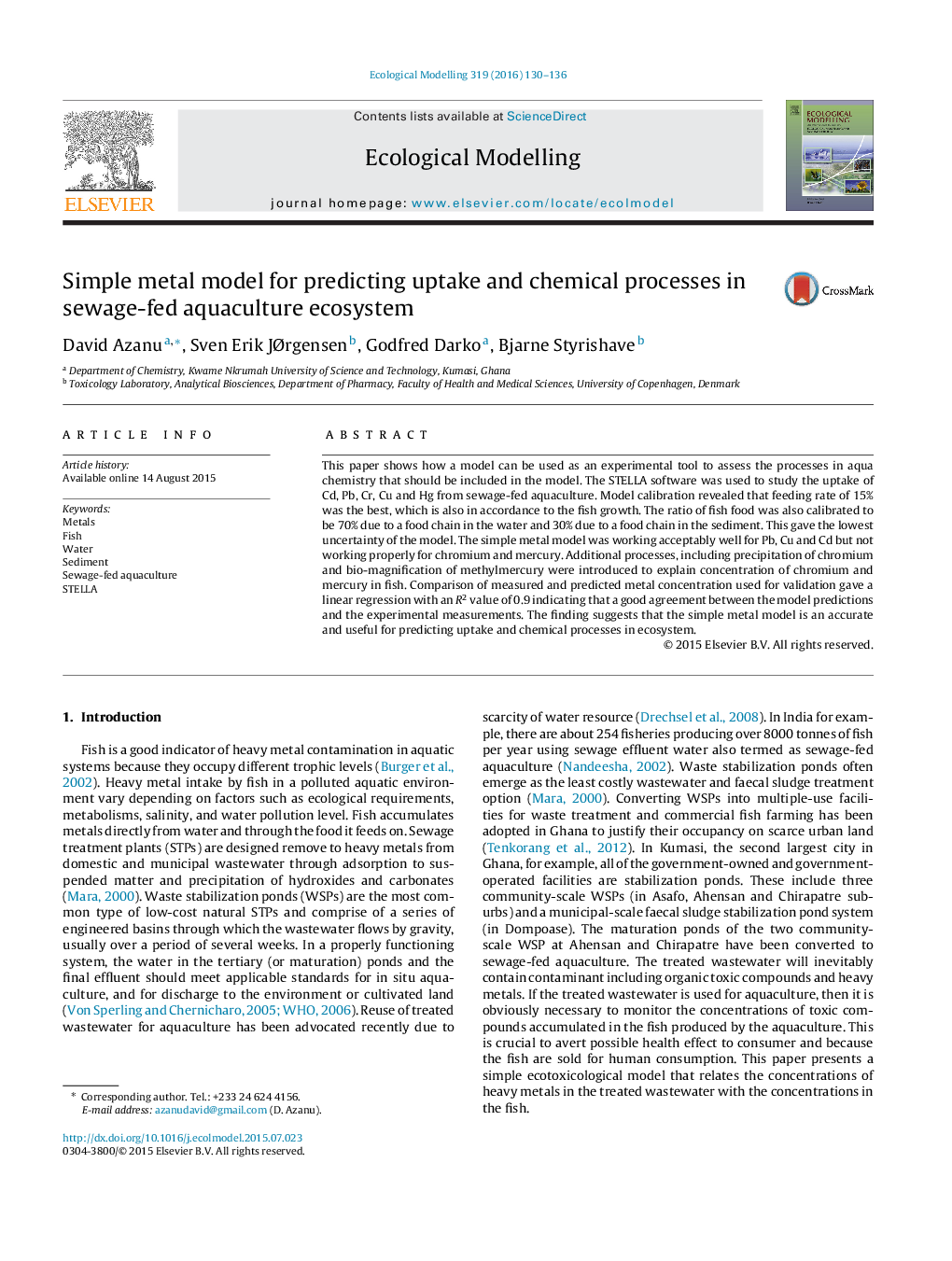| Article ID | Journal | Published Year | Pages | File Type |
|---|---|---|---|---|
| 4375615 | Ecological Modelling | 2016 | 7 Pages |
•Simple metal model for uptake of metals by fish from aquaculture was developed.•We determined the optimized fish feeding rate and food proportion.•Pb, Cd, and Cu show a good agreement with simple metal model.•Biomagnification of methyl mercury introduction into Hg model to give better fit.•Precipitation of Cr is needed to explain discrepancy in Cr concentration modelled.
This paper shows how a model can be used as an experimental tool to assess the processes in aqua chemistry that should be included in the model. The STELLA software was used to study the uptake of Cd, Pb, Cr, Cu and Hg from sewage-fed aquaculture. Model calibration revealed that feeding rate of 15% was the best, which is also in accordance to the fish growth. The ratio of fish food was also calibrated to be 70% due to a food chain in the water and 30% due to a food chain in the sediment. This gave the lowest uncertainty of the model. The simple metal model was working acceptably well for Pb, Cu and Cd but not working properly for chromium and mercury. Additional processes, including precipitation of chromium and bio-magnification of methylmercury were introduced to explain concentration of chromium and mercury in fish. Comparison of measured and predicted metal concentration used for validation gave a linear regression with an R2 value of 0.9 indicating that a good agreement between the model predictions and the experimental measurements. The finding suggests that the simple metal model is an accurate and useful for predicting uptake and chemical processes in ecosystem.
